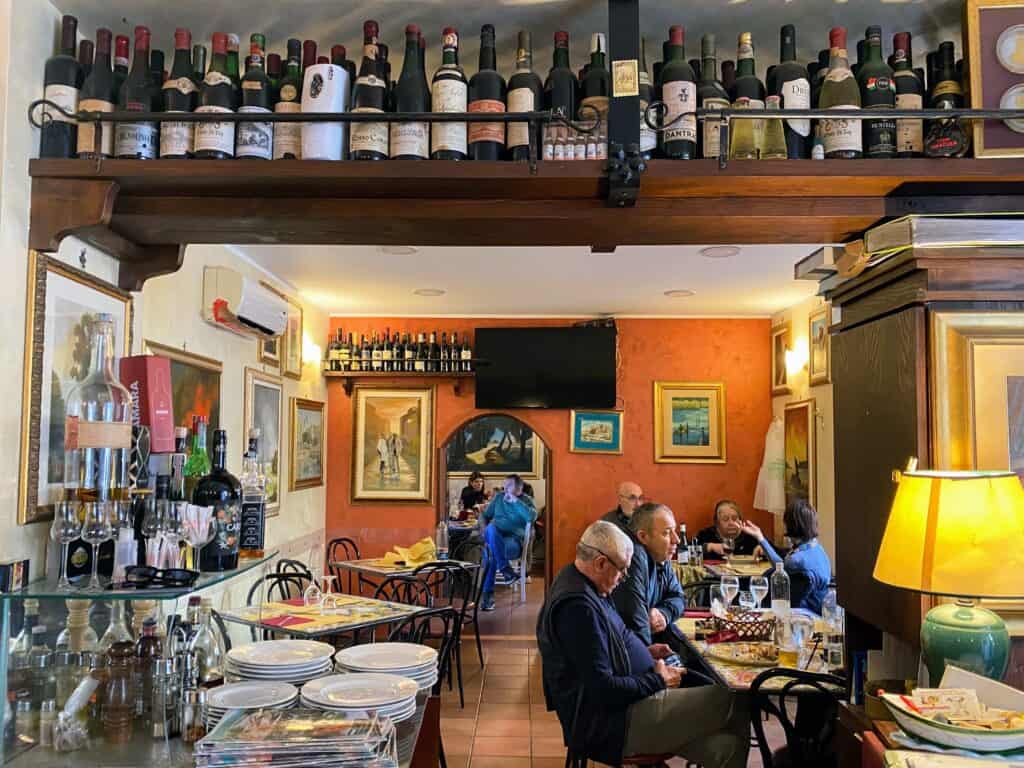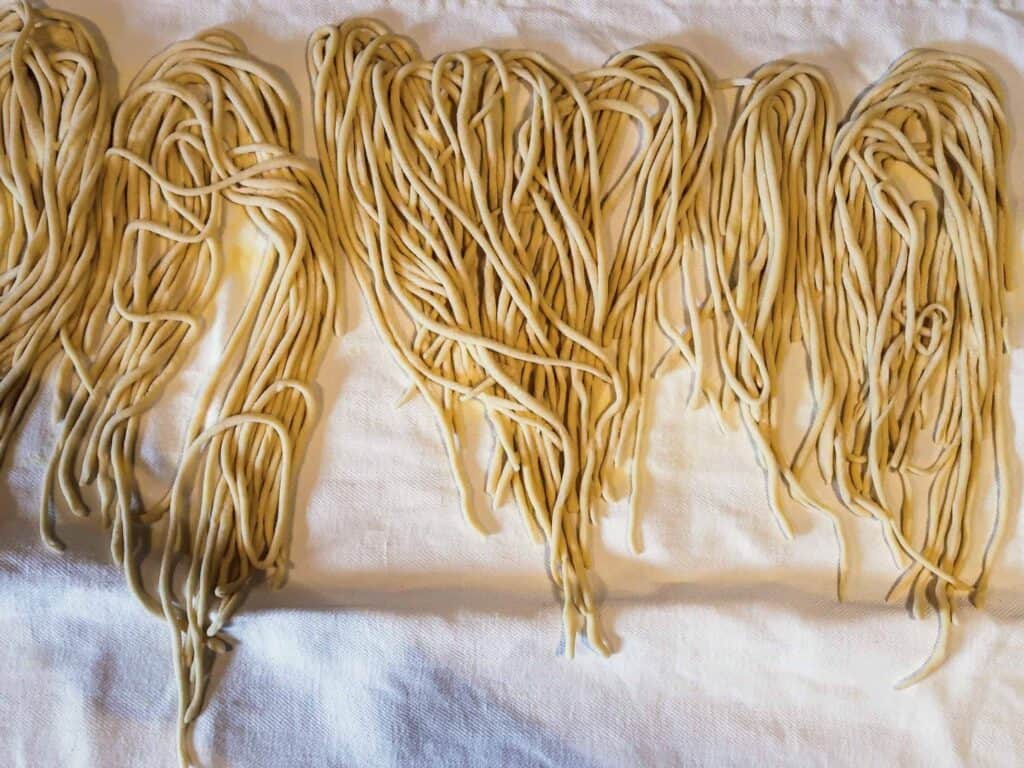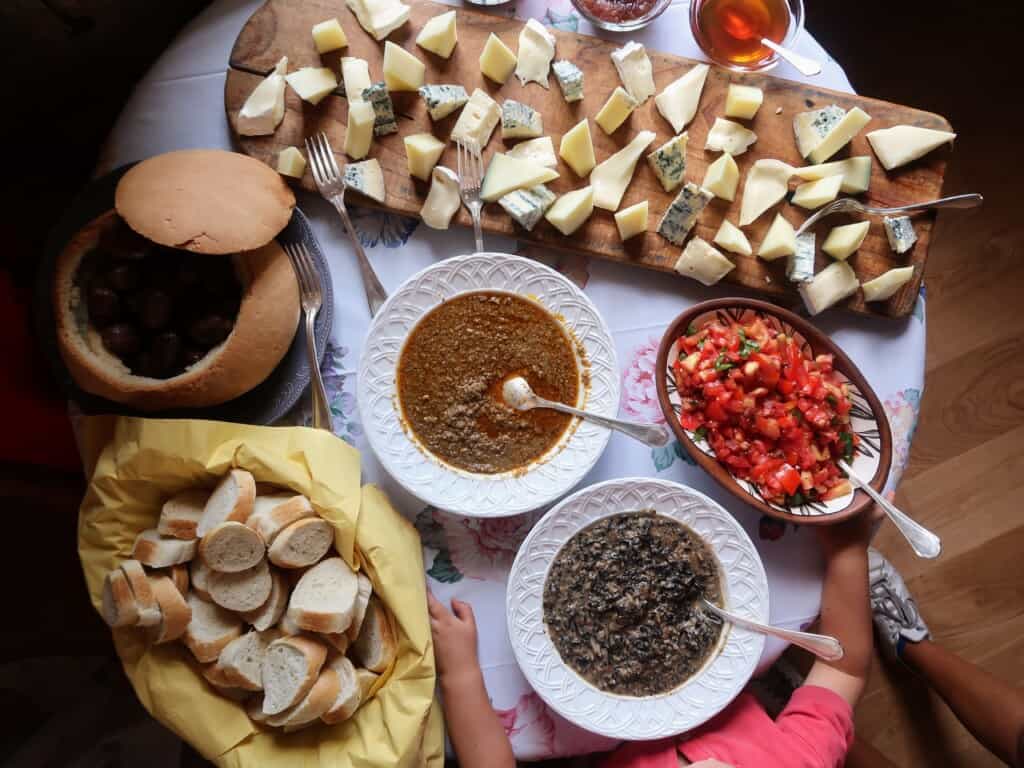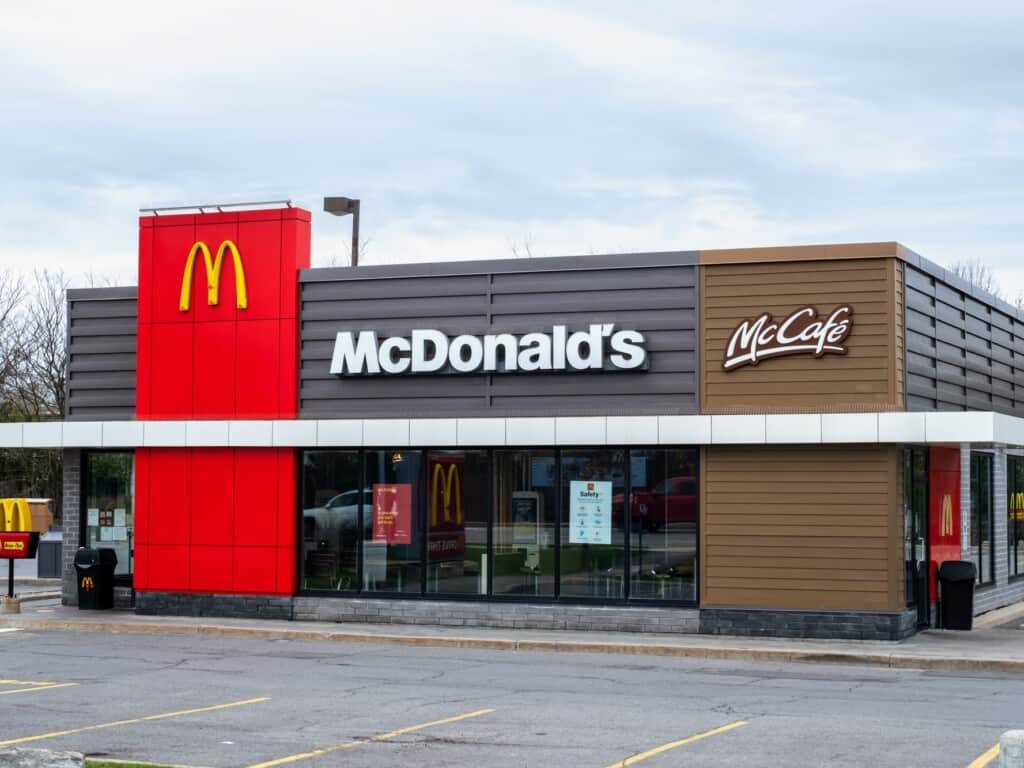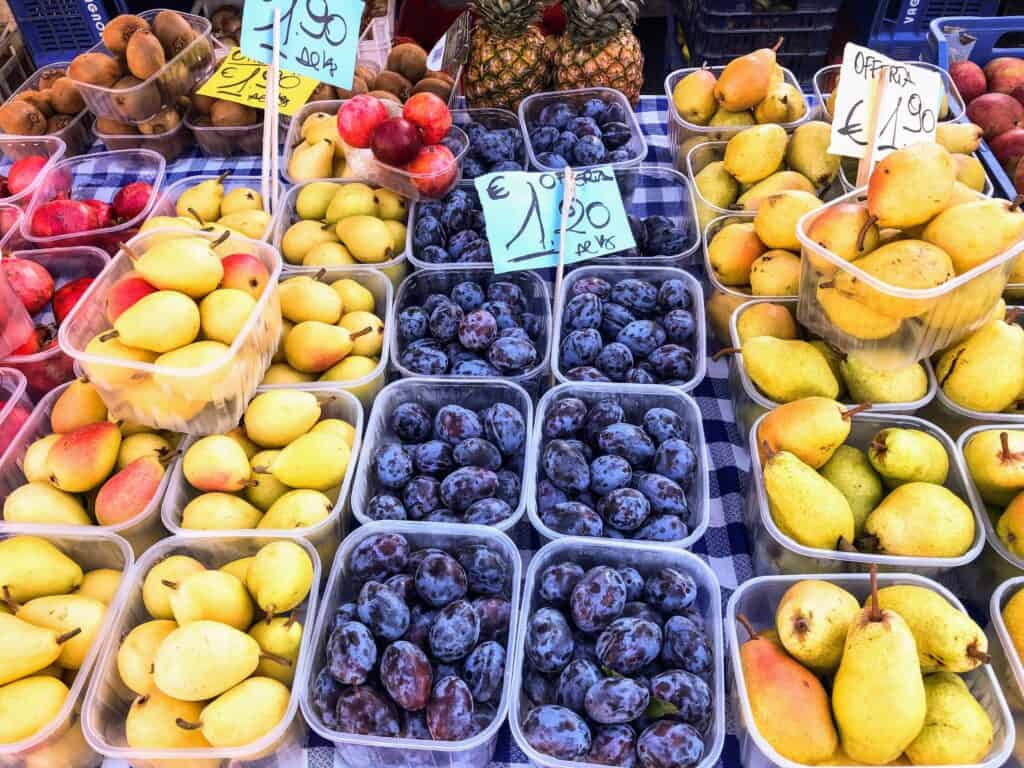Last updated on December 29th, 2023
I bet if you are reading this article you are a bit confused about the Italian coperto:
- Is it something I order?
- What does it include?
- Do I need to tip on top of it?
- Can I avoid it?
- When can I expect it?
All good questions and I had the same ones for years. I now understand the unwritten rules of the coperto, and I want to save you the headache of trying to figure it all out. Read on for an in-depth guide to exactly what to expect from the coperto, where you will find it, and what it includes and does not.
Jump to Section
What Is A Coperto?
A coperto is a mandatory per-person cost at primarily restaurants in Italy. The coperto is covering not only the service being provided to you but also everything that is essential to dining that you will see on your table – the table cloth, silverware, glasses, napkins and of course, the bread.
A typical coperto will cost anywhere from 1.50€ to 3.00€, depending on the restaurant. You may see it lower (at self-service joints) or higher (in very upscale restaurants).
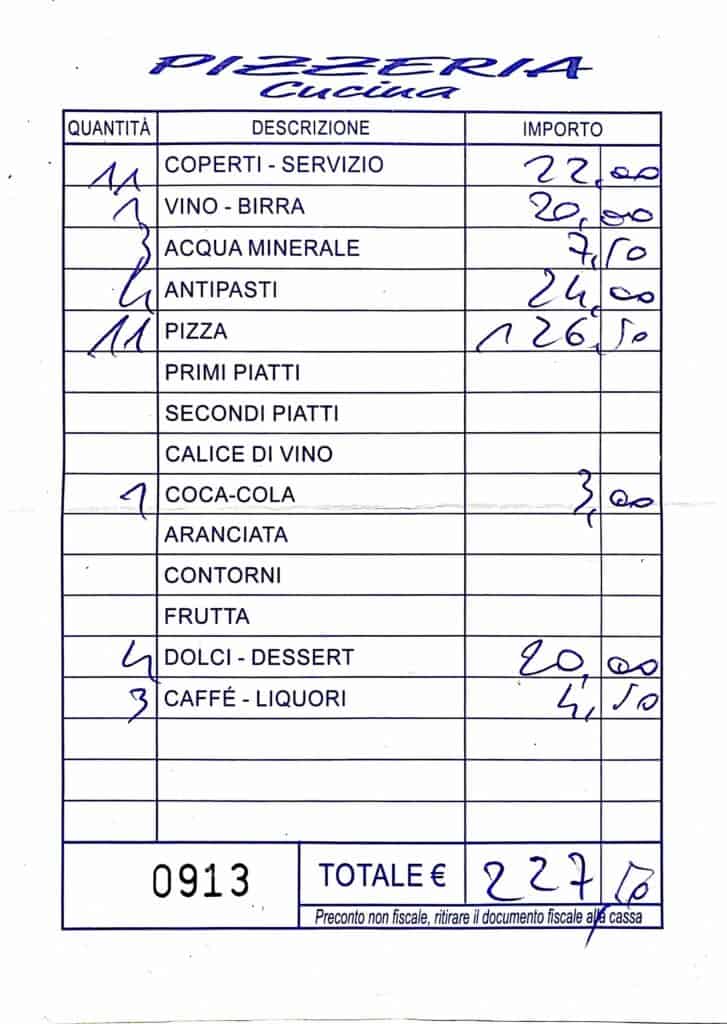
What Does Coperto Mean?
Coperto literally means covered, referring to literally everything covering or on your table at a restaurant. Coperto also translates to sheltered or indoors, shedding light onto the history of why the cover charge is called just so in Italian.
History Of The Coperto In Italy
The first mention of coperto comes from the Middle Ages when Italian travelers would seek shelter during bad weather during their journey from one place to another. These people, traveling with their own food, would come across lodges or large houses where they would be expected to pay a coperto for the use of the common items such as chairs, tables, plates and silverware. The small surcharge allowed them to eat their own food indoors, sheltered from hard weather. If, however, travelers did not have their own food and asked to be fed by the inn, the coperto was not asked but was simply part of a larger bill.
How To Pronounce Coperto
Coperto is pronounced koh-pehr-toh.
Listen to the pronunciation of coperto:
Example Phrases Using Coperto
Quanti coperti stasera? – How many cover charges tonight? (they want to know how many people will be eating)
Quanto è il coperto? – How much is the cover charge?
Il conto è sbagliato. Vedo cinque coperti e noi siamo quattro. – There seems to be an error with the bill. I see five cover charges but we are only four.
Bisogna aggiungere un coperto perché il bambino ha deciso di mangiare alla fine. – We will need to add a cover charge (meaning place setting) because the child has decided to eat after all.
Where Do You Pay Coperto In Italy?
You will be expected to pay a coperto in Italy anywhere where you are eating a meal and receiving table service, if provided. This includes restaurants, sagre or food festivals and bars in which meals are served. You might even see a coperto charge in self-service places where you are paying for the services of the restaurant (for example, the person who is going to wipe down your table when you leave), the bread, and the place setting even though no one is waiting on your table. In this case, the coperto might be slightly less, maybe just 1€.
Not all bars will charge a coperto, but many will if you are sitting down and decide to order a proper meal – an antipasto, primo or secondo. If you are at a bar and simply order a dessert, you won’t see a coperto charge but the moment you start ordering courses, expect to see one.
I like to think of it this way: if they are going to set a place for you with a knife, fork or spoon, napkin and placemat, then I should expect a coperto. I don’t always see it, but I do expect it.
Is The Coperto The Same As Servizio In Italy?
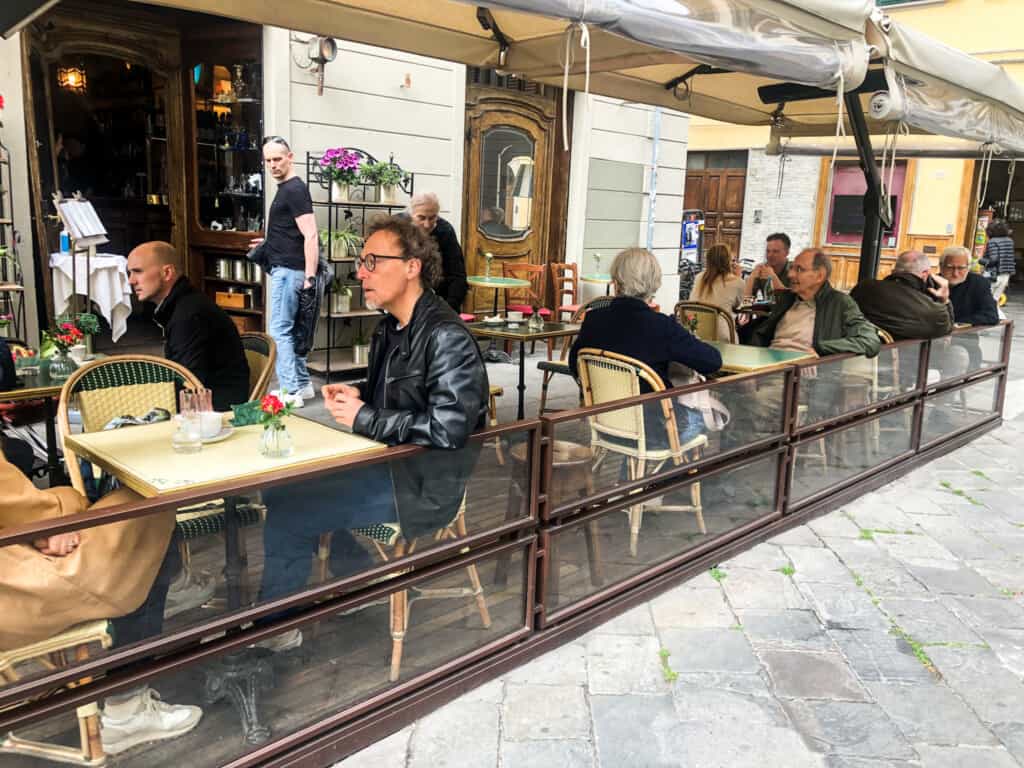
Yes and no. As I said, coperto is covering everything that you will need at a restaurant for your meal, but this also most likely will include service, if provided, such as at a sit-down restaurant (but not at a self-service restaurant or sagra).
The concept of an additional service charge or servizio is practically non-existent in Italy but unfortunately, you might come across it in very popular restaurants in larger cities such as Rome, Florence and Venice. Some restaurants use the service charge as a kind of “tourist tax” for visitors (locals would never be charged in this way unless they are serving a large party of 10+, in which case they may be).
Just like the coperto, for a service charge to be legal, it must be listed on the menù. Please take note of this if you are trying to avoid it before sitting down. If it is not listed on the menù and they charge you, you can ask them to remove it, as it is not legal.
Is The Coperto The Same As A Tip In Italy?
No, a coperto is a fixed charge that goes directly to the restaurant, not directly to the waiter. You are not expected to tip or lasciare una mancia in Italy as the service is included in the coperto charge, but it is nice to leave a few extra euros or pocket money if you have it on hand. Waiters do not expect you to tip, but it is quite a nice thing for them when it does happen as it’s not the norm. For more about tipping in Italy, read Tipping In Italy – When & How Much From A Local (2023)
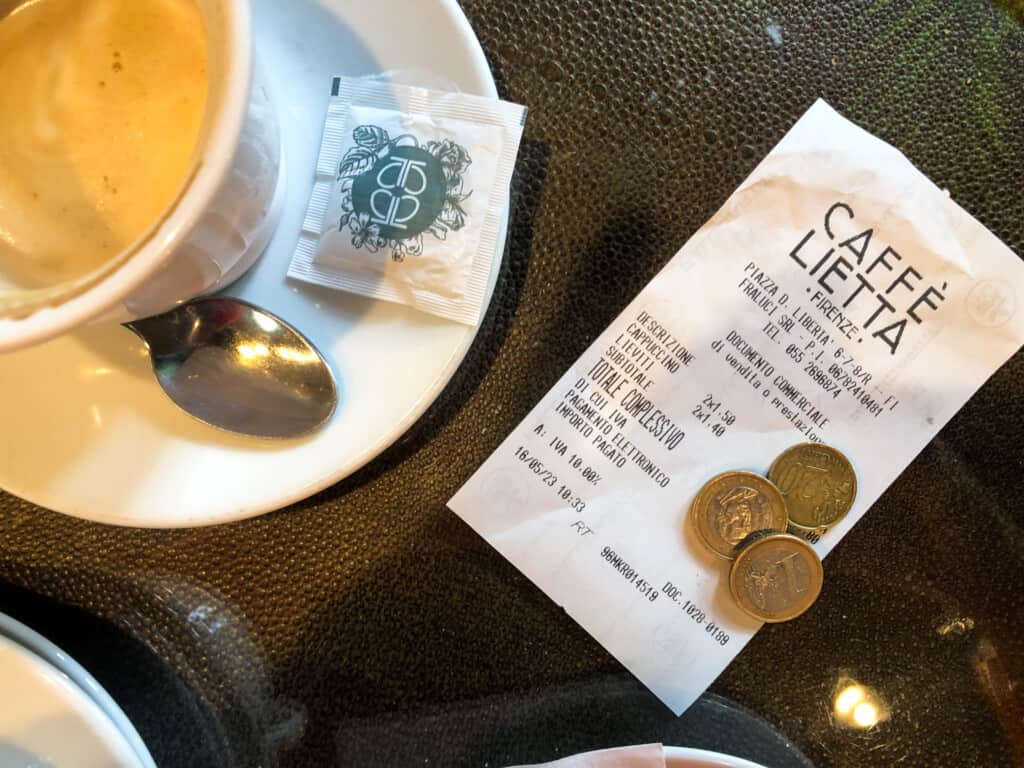
Is The Coperto In Italy A Legit Charge?
Absolutely. This is because you are paying for the services being provided at the restaurant at which you are dining without any expectations that you will leave a tip. Not only does it include the service of the waiter, the service of all the restaurant workers such as bar tenders but it includes the bread that you are served at every meal and everything that you are provided with at the table such as the table cloth, glasses, silverware, napkins, etc.
Essentially, the cover charge is covering all the basics you see on the table at the restaurant.
The coperto charge does not go directly to the person who is serving you, but he or she is paid a normal wage in comparison to American waiters who rely primarily on tips to make a decent hourly wage. Rather, the coperto charge goes directly to the restaurant who uses this money to cover their costs and pay their waiters.
Italian Coperto FAQ
Not at all. It’s typically based upon the type of restaurant you are at and its price point. The more expensive, the higher the coperto charge. The more casual, the less expensive. You may be at a spendy trattoria and get terrible table service, despite the slightly more expensive coperto. Sorry but customer care is not Italy’s strong suit.
All sales tax, known at VAT, is included in the prices, including food prices on the menu. You will notice on the receipt they will tell you which portion of the total bill is the VAT.
